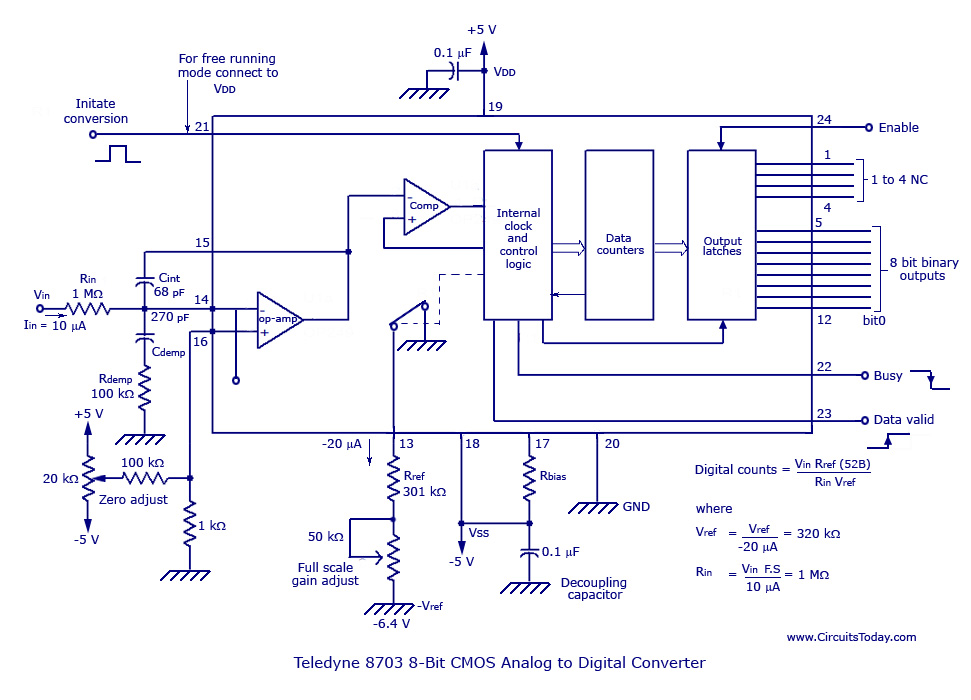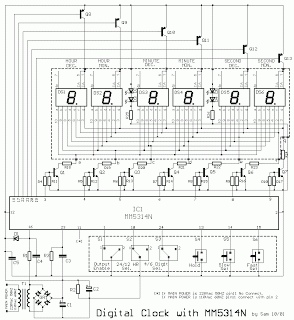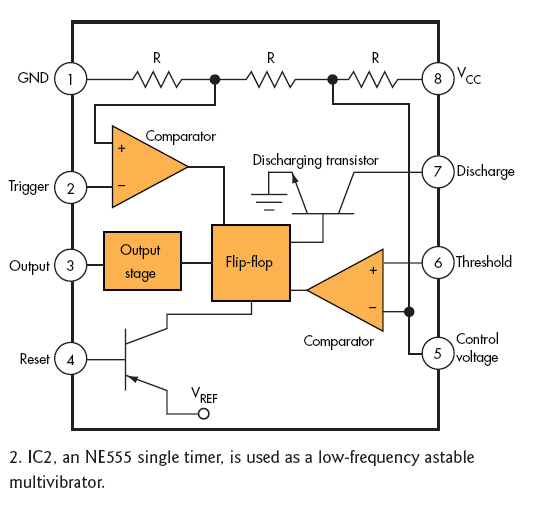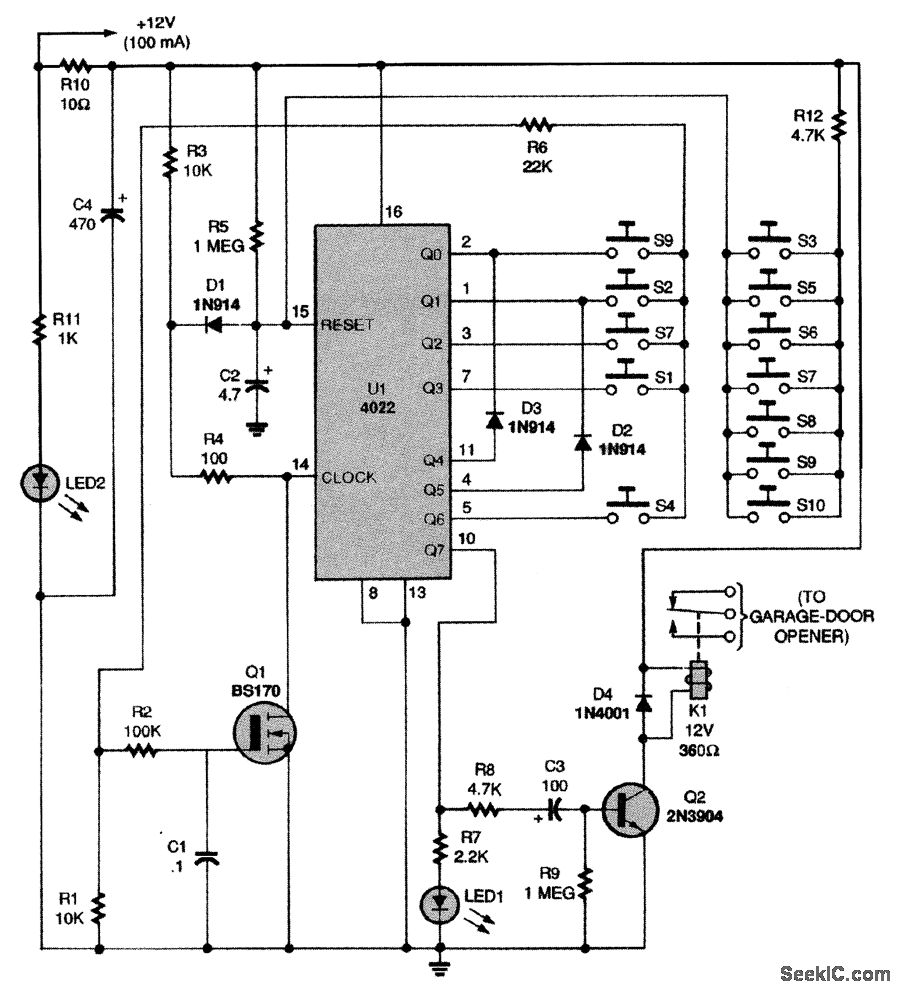
Digital Clock Circuit-CMOS 4047
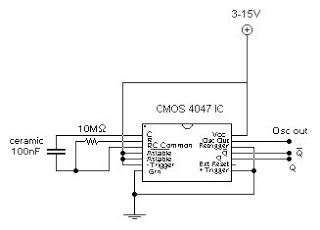
This circuit generates a digital square wave that can be displayed directly or utilized to drive additional circuits. It employs the CMOS 4047 Low-Power Monostable/Astable Multivibrator, as referenced in Tom Duncan's "Adventures with Digital Electronics" book, to control a CMOS Decade of 4-bit binary counters.
The circuit design utilizes the CMOS 4047, which is a versatile device capable of operating in both monostable and astable modes. In astable mode, the 4047 produces a continuous square wave output, the frequency and duty cycle of which can be adjusted through external resistors and capacitors connected to its timing pins. This square wave output is characterized by its clean transitions and low power consumption, making it suitable for driving digital logic circuits.
In the context of driving 4-bit binary counters, the square wave output from the 4047 can be connected to the clock input of a CMOS decade counter, such as the 4017 or 4026 series. This configuration allows for counting sequences in binary, where each pulse from the 4047 increments the counter by one. The output of the counter can then be used to drive LEDs or other display devices, providing a visual representation of the counting process.
The circuit can be further enhanced by incorporating additional components, such as diodes for signal conditioning or transistors for buffering the output if higher current drive capabilities are required. Proper power supply decoupling should also be considered to ensure stable operation of the CMOS devices involved. Overall, the combination of the CMOS 4047 and a 4-bit binary counter creates a robust and efficient digital counting circuit suitable for various applications in digital electronics.This circuit provides a digital square wave that can be viewed directly or used to drive other circuits. It used the CMOS 4047 Low-Power Monostable/Astable Multivibrator. As used in Tom Duncan`s Adventures with Digital Electronic`s Book, to drive CMOS Decade of 4-bit binary counters.
🔗 External reference
The circuit design utilizes the CMOS 4047, which is a versatile device capable of operating in both monostable and astable modes. In astable mode, the 4047 produces a continuous square wave output, the frequency and duty cycle of which can be adjusted through external resistors and capacitors connected to its timing pins. This square wave output is characterized by its clean transitions and low power consumption, making it suitable for driving digital logic circuits.
In the context of driving 4-bit binary counters, the square wave output from the 4047 can be connected to the clock input of a CMOS decade counter, such as the 4017 or 4026 series. This configuration allows for counting sequences in binary, where each pulse from the 4047 increments the counter by one. The output of the counter can then be used to drive LEDs or other display devices, providing a visual representation of the counting process.
The circuit can be further enhanced by incorporating additional components, such as diodes for signal conditioning or transistors for buffering the output if higher current drive capabilities are required. Proper power supply decoupling should also be considered to ensure stable operation of the CMOS devices involved. Overall, the combination of the CMOS 4047 and a 4-bit binary counter creates a robust and efficient digital counting circuit suitable for various applications in digital electronics.This circuit provides a digital square wave that can be viewed directly or used to drive other circuits. It used the CMOS 4047 Low-Power Monostable/Astable Multivibrator. As used in Tom Duncan`s Adventures with Digital Electronic`s Book, to drive CMOS Decade of 4-bit binary counters.
🔗 External reference

